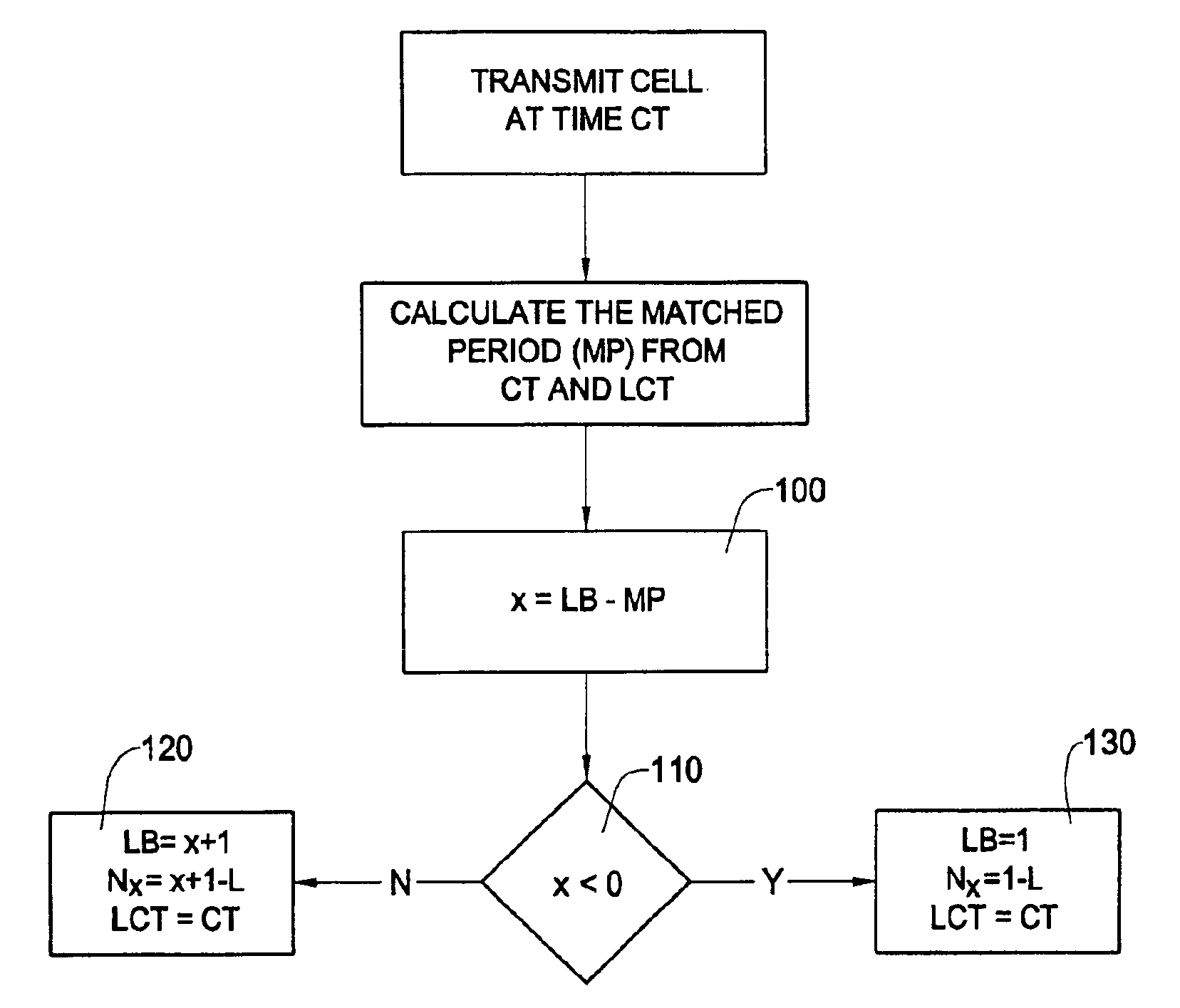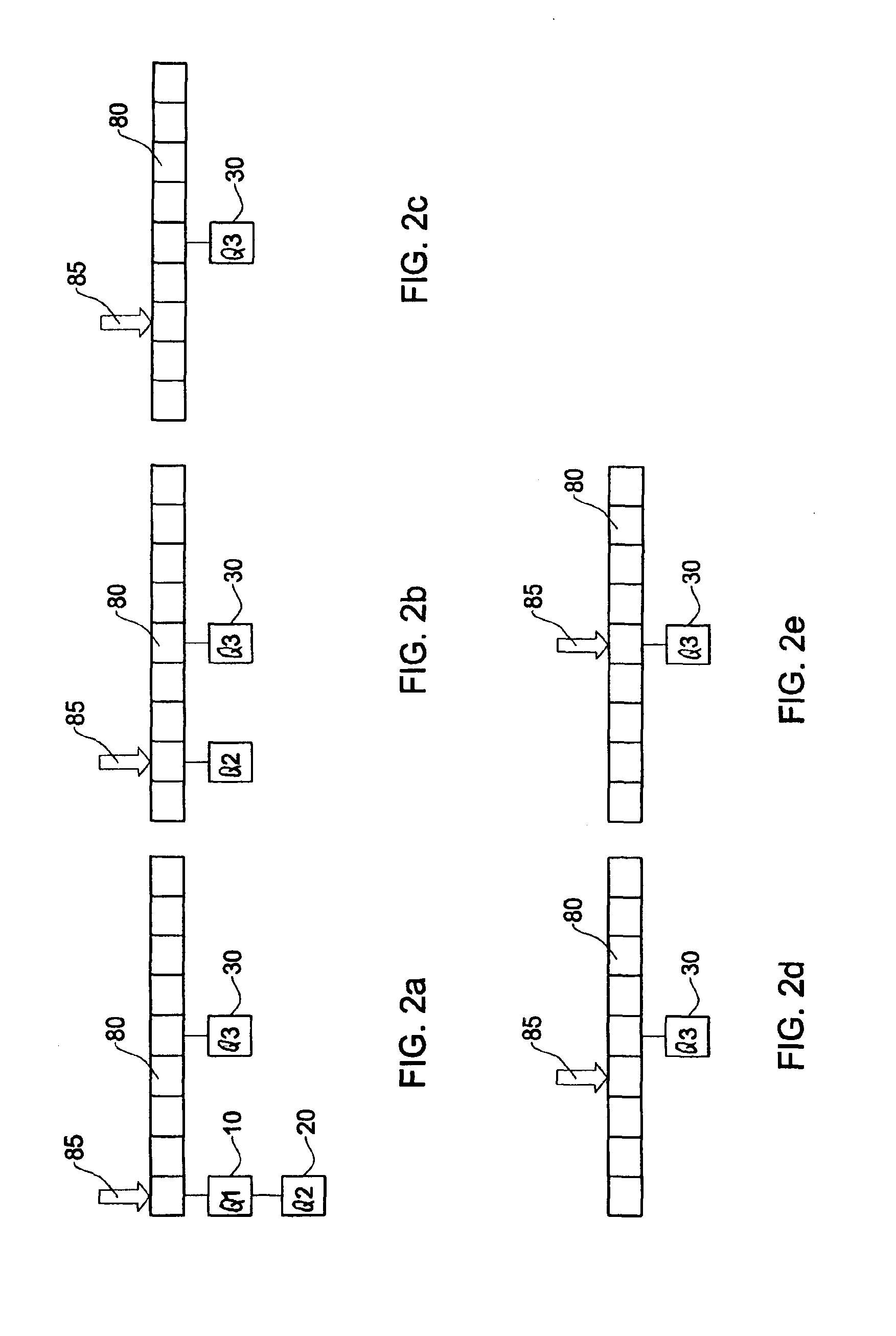Method and system for traffic control
a technology of traffic control and method, applied in the field of traffic control, can solve the problems of congestion of cell-based transmission systems, overall degradation of network performance and data loss, and time delay of output flows relative to input flows, and achieve the effects of improving accuracy, high accuracy, and large number of connections
- Summary
- Abstract
- Description
- Claims
- Application Information
AI Technical Summary
Benefits of technology
Problems solved by technology
Method used
Image
Examples
Embodiment Construction
[0047]FIG. 1 is a schematic diagram of a traffic control system according to the present invention.
[0048]Traffic queues Q1 to Q4 (designated 10 to 40) are linked to queue manager 50. The queue manager 50 is configured to multiplex and shape the traffic from the queues 10-40 onto an outgoing link 60. In the following examples it is assumed that the sum of the bandwidth of the traffic on the incoming queues 10-40 is less than the bandwidth of the outgoing link 60. Therefore there should be no contention once the traffic queues are shaped. The queue manager 50 includes a leaky bucket calculator 70 and a calendar 80.
[0049]The scheduled transmission order of the queues is stored in the calendar 80. The calendar is a linear array with size of 2n in which each index represents a potential transmission time. If a queue is scheduled for transmission at that time, the queue is referenced by the corresponding array index. If there is more than queue scheduled for transmission at one time, the ...
PUM
 Login to View More
Login to View More Abstract
Description
Claims
Application Information
 Login to View More
Login to View More - R&D
- Intellectual Property
- Life Sciences
- Materials
- Tech Scout
- Unparalleled Data Quality
- Higher Quality Content
- 60% Fewer Hallucinations
Browse by: Latest US Patents, China's latest patents, Technical Efficacy Thesaurus, Application Domain, Technology Topic, Popular Technical Reports.
© 2025 PatSnap. All rights reserved.Legal|Privacy policy|Modern Slavery Act Transparency Statement|Sitemap|About US| Contact US: help@patsnap.com



